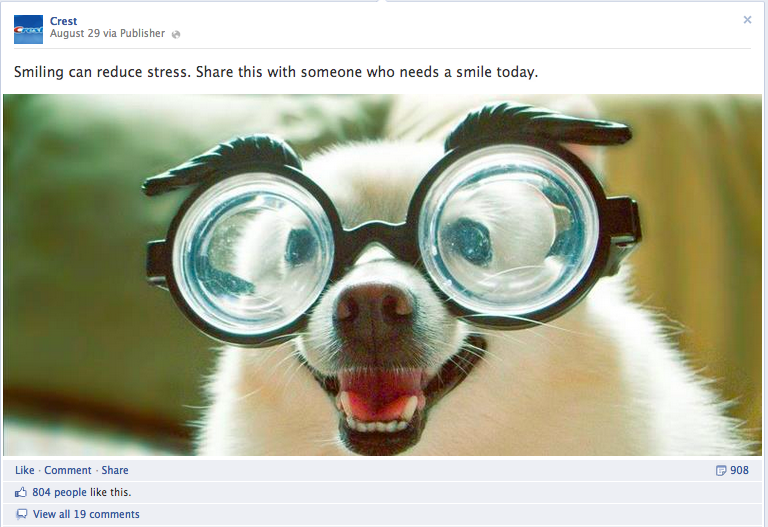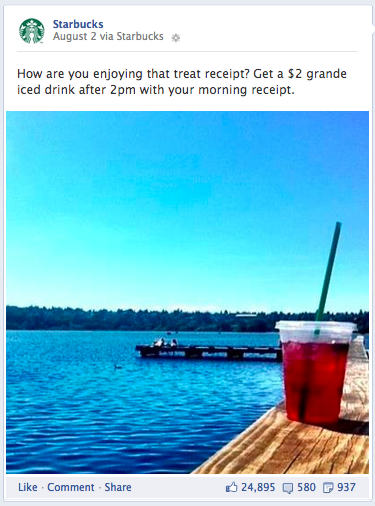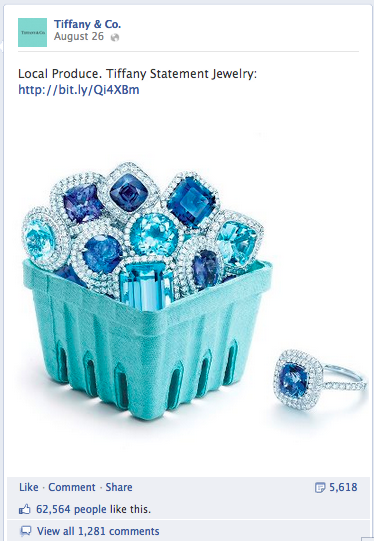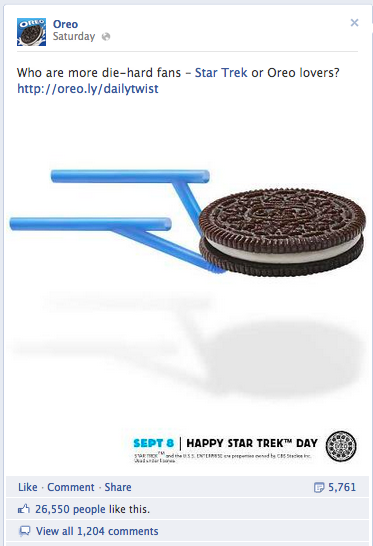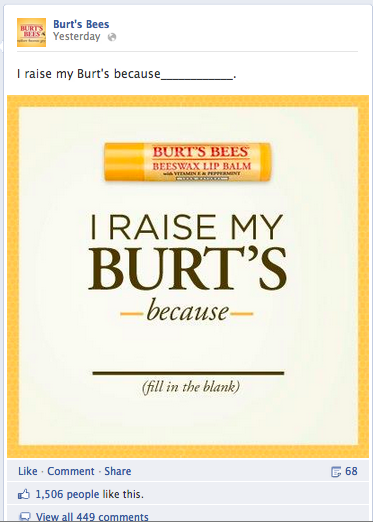posted by AJGpr | on public releations | No comments

 AJGpr , A Los Angeles PR firm, found this great list of advice for PR professionals – especially newbies when dealing with journalists from Ragan’s PR Daily.
AJGpr , A Los Angeles PR firm, found this great list of advice for PR professionals – especially newbies when dealing with journalists from Ragan’s PR Daily.
- Don’t be afraid: Reporters need you as much as you need them – sometimes more if you’ve got an awesome, sought-after client. They are being challenged to churn out content FAST and they’re often relying on others (you) to provide insight, quotes, access to spokespeople and in some cases, help educate them on a complicated or new (to them) topic – all by deadline. It’s a mutually beneficial relationship so don’t be afraid to make that first contact – you might be surprised.
- Get connected: I don’t advise blindly connecting to every reporter you’ve ever heard of on LinkedIn, but after that first client briefing or email trail, connect with them on LinkedIn. Even easier, follow them on Twitter or Google+ and subscribe to their feed. My best media contacts are people that I’m connected to on LinkedIn and I truly believe that sometimes, because they see my face pop up on their news feed, they remember to reach out with a source request.
- Reporters need to network, too: More than ever, reporters are being measured by their social networks and how many people – hits – they can get to their stories and to then go back and share with their own networks. That is stressful! That being said, reporters know PR pros tend to be outgoing, well-connected individuals, and they may lean on you to broaden their reach. I’ve connected a few reporter “friendlies” with other PR pros for stories that have led to success for all involved. I also sometimes send a reporter, if they’re in my region, a link to a networking event they might find interesting or that I’m attending.
- Freelance writers rock: And there’s more of them then there were four years ago. Get in good with a freelancer and you won’t regret it – these are smart, driven and often very KIND people who at any given point could be writing something super niche, for a “smaller” outlet, and then next thing, contributing regularly to a column in a major business publication. Because of the nature of operating solo and/or remote from the main news hub, freelancers are more likely to reach out with a media request and ask for help.
- Share the S*** out of their news — and not just when it’s yours: You have a reporter friend and they just wrote about your client and you’re PUMPED so you like it, tweet it, send it to your Mom (don’t lie, you’ve done it). Your reporter friend appreciates this because they want more web traffic to their article and in many cases today, their boss is counting how many hits, RTs, comments, etc. that article receives. On several occasions I’ve actually had reporters email me after coverage hits to let me know “Yay! It got a bunch of comments” or “Wow! The story got X number of click-throughs” and then thanked me for sharing it on LinkedIn or Twitter. But it’s not just YOUR coverage that should be shared – like any solid PR pro you want to be consistently reading your media “friendlies” work and sharing it with your network. Reporters recognize this and will not forget you when it comes time to write another story.
To that PR newbie I would then say: At the end of the day, if you’re doing your job right, a reporter will not only see you as a resource, but as an industry peer. And that makes public relations more valuable, powerful and better in terms of what we can offer our clients.
posted by AJGpr | on public releations, social media | No comments

AJGpr was wondering how best to use Manta to promote its clients. A Google search brough up this article by Stepahnie Taylor Christensen for BusinessNewsDaily.
The best small businesses in the world can’t be a success until it becomes known within its community and industry. Budget and resource constraints can make that an especially challenging task for small businesses. That’s where a service like Manta comes into play.
The web site, which allows users to post information about their company and allows consumers to find them, currently hosts more than one million registered users and 64 million company profiles. Six years after its inception, Manta is ranked the third largest business news/research website by comScore.
Manta’s President and CEO Pamela Springer, explained how small businesses can use Manta to reach a broader customer based.
BusinessNewsDaily: How is Manta different/more valuable to a small business owner than Google or Hoovers listings?
Pamela Springer: Manta offers so much more than an online business listing. We’ve become the destination site for small business owners to promote their company and connect with customers, prospects and partners. Our comprehensive coverage of small companies, including details about the people who work for these companies, and the ability to connect with the business owners and professional directly, is the foundation of our community. Traditional online business listing sites may offer either a consumer-centric experience, or simple, often limited, business information. Manta’s focus is on capturing comprehensive, unique and accurate business information directly from the business owner .
The Manta company profile is truly a source of promotion for a company. The ability to update and enhance this profile so it is accurate and reflects what the business owner wants to communicate, is a key feature. It’s essentially business connecting with more business. More than 2,000 business owners claim or add their company on Manta each day, and more than 27 million unique visitors come to Manta to find these companies.
BND: How can small business owners use Manta to transform search activity into actionable prospecting tools?
P.S.: Manta members can request to become a contact of any registered user of Manta in order to promote their company or build business relationships with sales prospects and partners. Manta’s unique filters allow users to refine their requirements in finding a particular company or set of companies based on revenue, employee size, etc. They also can save and store information, including contact information, so they can create a forecast or sales pipeline. Manta also provides business owners weekly statistics as to how many users have visited their profile compared to their peer group along with charts comparing related businesses in their area.
BND: What is your recommended strategy for a small business with limited marketing budgets to use Manta most effectively?
P.S.: Business owners don’t need research to tell them their customer is spending more time online. Step 1 of any small business owner’s online strategy is to be found. Step 2 is to make sure the information found is accurate and engaging. A Manta profile successfully implements that strategy for no charge to the business owner. To take full advantage of Manta, a small business owner should add detailed information on products and services, logos, website links, photos, press coverage, videos, event information, association memberships, and Facebook and Twitter account details. Company profiles should be updated as often as necessary to keep the information fresh and compelling.
Business owners also can purchase a Premium Business Listing, which allows their profile to be found in distinct areas of the site based on keywords they choose. By choosing keywords that match your specialty, you become easier to find for Manta users seeking businesses like yours. You also can designate geographic areas for your keywords, so that you can be found by people outside of your immediate geographic area.
BND: What kind of small business owner should use Manta? Is it appropriate for businesses whose end-user is the consumer, or business-to-business sellers only?
P.S.: While our user-experience is oriented toward answering business questions, Manta can be used by any kind of business serving any type of customer. Our company profiles include accurate, in-depth business information necessary for making introductions and initiating potential business. In many instances, a Manta company profile ranks extremely high in search engine results page, helping promote a B2C or B2B company.
BND: You recently took a giant leap in traffic, growing from 12 million to 26 million users. Where did the audience boost come from?
P.S.: In a very short period of time we’ve become one of the largest sites on the web (#41 on Quantcast) and one of the most influential (comScore recently cited Manta as one of the top properties driving overall web growth).
As visitors search for companies on Manta, more companies claim, update and add their profiles and use the new features we’ve introduced to promote their business. Our repeat traffic from existing users is exploding. The more company profiles are claimed, the richer and more valuable our data becomes. The unique and in-depth details in our company profiles, and the ability to connect with business owners attached to those profiles, is developing a very strong following and fueling our huge audience growth.
BND: What advice would you give an entrepreneur just starting out in terms of the best and smartest ways to use the tools Manta provides?
P.S.: My advice for any entrepreneur is to use Manta to research and investigate the marketplace and use your findings to strategize and create a business plan. Using Manta, you can research and survey the business landscape by category or region and then use our “ChartIt” tool to visualize your findings.
Manta’s database of detailed company information allows anyone to research possible partners, vendors and suppliers; source products and materials, and seek information about competition or potential adjacent markets. Manta provides endless possibilities as a research tool. Finally, use Manta to network. Never underestimate what a personal connection can lead to.
BND: How might a small business listed on Manta whose owner is unsure how to use it effectively, make changes to beef up its value?
P.S: Manta gives a platform to promote business, so updating and changing the profile regularly with new information is key. In addition to our free profiles, our Premium Business Listings allow users a wider array of services and features to enhance their online presence. We send weekly activity reports on viewership and offer customer service support to our users.
BND: What is the most common misperception businesses have when it comes to using Manta? What’s the biggest missed opportunity?
P.S.: The biggest misconception is that Manta is simply a database. Manta is a community in which small businesses can promote their business and connect to customers. Through its rich, detailed profiles on nearly 64 million businesses worldwide, Manta serves as an unrivalled resource. The biggest missed opportunity for a small business owner is to simply not be a member of the Manta community.
posted by AJGpr | on public releations | No comments

Elena Verlee writes in her blog about the use of humor in PR. AJGpr, a Los Angeles PR firm thinks the topic is interesting enough to share with you.
Here it is:
What if there was a way for you to differentiate your PR from the rest of your competitors — but it’s slightly risky and not that easy. Would you try it?
Such a PR tool does exist. It’s called humor.
According to Marketing Profs, few companies are using humor in their marketing and PR that, whenever a company does — and does it well — it’s sure to stand out, especially among technology companies.
“High-tech suffers from terminal seriousness,” says Kathy Klotz-Guest in her article, “Humor in PR: Can You Hear Me Now?”
Companies that do harness humor in their PR are sure to catch the attention of media and the public.
Humor is also effective at engaging your target audience and getting more mileage out of social media.
“Consumers are, in fact, willing to engage with companies and brands in today’s online social forums,” says Aaron Perlut in his Forbes article, “Humor Can Create Engagements.”
Granted, using humor carries some risk. Context is everything, for one thing. If you have a global audience, your North American markets may get the joke, but your Asian markets may end up scratching their heads.
Furthermore, being funny does not excuse you from offering real news. Your PR materials, while humorous and entertaining, still have to have news value.
You have to know your audience to use humor effectively — something which is true of any type of communication, PR or otherwise.
This Brand Gets Humor Right
Many experts agree, self-deprecating humor works best. To give you an example, the satirical publisher, The Onion, once made fun of Tide in a parody article about how companies are using social media to promote themselves. The company got in on the joke, produced the fictitious video described in the article, and generated plenty of social media buzz, not to mention kudos from the writers of The Onion themselves. It was an excellent example of how a brand’s ability to laugh at itself can produce positive PR.
Click here for the original article in The Onion.
Is Humor Right for You?
The next question is, of course, whether humor is a good approach for your company or client.
I think it’s possible to find a humorous angle, if not several, in any product, service, market or industry. However, there are some things to keep in mind:
- Stay relevant. Humor brings positive PR only when it helps expand your core messages.
- Be sensitive. Humor’s impact depends on the attitudes and values of the audience. Be aware of cultural, religious, political and other sensitivities that may make your comedy backfire. This is where having a true understanding of your audience — developed through listening and interacting with them — pays off.
- Steer clear of humor bombs. Certain topics are bad jokes, no matter what. This includes child abuse, exploitation of women, racial discrimination and disabilities.
posted by AJGpr | on public releations | No comments

I read this interesting post on LinkedIn today by PR professional Lisa Arledge Powell that I wanted to share with AJGpr blog readers. I TOTALLY agree with Lisa’s adage “There is no circumstance when the question, ‘Did you get my press release?’ should be uttered.”
4 Things PR Pros Should Never Say To Reporters
Here is what Lisa has to say:
Our business is about relationships. In order to foster the strongest relationships possible, you want to be sure to always communicate with efficiency and strategy and never utter the following statements:
1. “Did you get my press release?” As a current PR pro and former news anchor, I think I can speak for almost every person in the media and say that there are few things more annoying than the dreaded “Did you get my press release?” phone call. Nothing in the world of PR guarantees an immediate hang-up quite like this question. If you sent it, chances are good that they got it. They’ll let you know if they are interested. If an outlet chooses not to run your story, picking up the phone and nagging them is not going to persuade them to change their decision.
2. “What types of articles do you run?” Watch and listen before pitching. Educate yourself about the media outlet and that particular reporter’s stories before pitching them. Your story angle, pitch, and everything you do relating to your media outreach should be customized, and that includes the timing of your outreach. Know the schedule for editorial meetings and deadlines and be respectful of it. If you want the media to take the time to read and fully consider your pitch, show them that you’ve taken the time to read and understand their work.
3. “This is a perfect fit for you.” When you say this, a reporter hears one of two negative things: desperation or bossiness. They might suspect that the story isn’t a perfect fit for anyone because you’re pushing too hard, or you could come across as a know-it-all. There are always internal pressures, personal preferences, and other planned stories to consider. Only the contact you are pitching knows how your idea fits into their big picture. Let them decide whether it’s a “perfect fit.”
4. “You’ll have to be quick; I don’t have much time” Understand the time involved in a reporter’s story preparation. For example, it can take several hours on multiple days for a profile piece that involves an in-depth interview and a photo shoot. Be sure that as a PR person you understand the commitment level of what you’re pitching and that you can deliver if the media is interested. You can often save time by understanding the reporter’s multimedia needs beforehand and mapping out photo or video ideas—or you can directly supply these assets from the start.
If you take this advice to heart, I guarantee that you’ll find a much more receptive news media audience. There is a fine line between nagging and a friendly check-in that no PR pro should ever cross.
If you’re worried that a story didn’t get the results you expected, try pitching it in a different way. What may seem like a dead end can actually be an excellent motivator to get more creative with your conversations with the news media.
Just be sure to never let any of the aforementioned questions or statements slip out. You’re better than that.
posted by AJGpr | on parenting, print media | No comments

Writer Suzanne Schlosberg reached out to several parenting experts for her story in Parenting magazine on “How To Keep Control And Your Cool – While Your Kids Test Limits Every Which Way They Can.” My client, parenting expert Betsy Brown Braun was among the experts who weighed in on this important topic.
For the full story click here.
Betsy is the best selling author of award winning Just Tell Me What To Say and You’re Not The Boss Of Me,
posted by AJGpr | on public releations | No comments
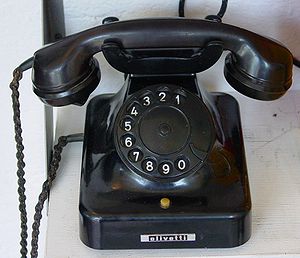
The Phone and PR Practitioners in an Era of Social Media
Yes, PR professionals have gone digital and social media is an important tool in “getting the word” out. But even in today’s digital world, many stories get “ink” because a phone call was made and the deal was sealed.
Pitching by phone to get a journalist or producer interested in a story takes preparation. Here are a few tips from AJGpr for the pitch call made perfect:
1. Do your homework – is your pitch newsworthy? Is it relevant to the person your pitching? Can you deliver the message succinctly? If not, practice until it is tight – journalist don’t have time to listen to long introductions. Be enthusiastic but business-like in your tone.
2. Make sure you are calling when a reporter, editor, producer is NOT on deadline. How do you know? You don’t always – but you can assume that newspapers are on deadline in the afternoon, weeklies that come out on Mondays have Thursday/Friday deadlines, and for monthly publications deadlines can stretch over several days. Most PR professionals have access to Vocus and Cision which lists how and when media contacts like to be pitched. Some say NO CALLS – so respect that. When you do connect, always be polite, introduce yourself, and ask, “Is this a good time?” If the answer is yes – get to pitch quickly and complete in 2-3 sentences. If the answer is no, find out when would be a good time to call back.
3. Be courteous. It counts to use your best manners – “please’s” and “thank you’s.” Don’t multi-task – be focused on your listener.
4. Be clear about the outcome you want from the journalist, producer. Do you want to book your client on a TV segment? Do you want to set up a phone interview, a face-to-face interview? Do you want them to attend an event? Send a reporter? Be sure to conclude the call with next steps, including how best to contact you.
5. Be persistent. But don’t be a pest. If you have agreed on a phone follow-up, stick with the plan. If your call is unanswered after 2 or 3 attempts to reconnect – let it go.
posted by AJGpr | on social media | No comments

I found this great post by Arik C. Hanson, for his blog Communications Conversations which he posted back in September and I wanted to share it with AJGpr blog readers.
Last week, I talked about the obvious trend of “art direction” when it comes to content on Facebook. However, what’s relatively shocking is the few number of brands that have caught on to this huge content shift on the biggest social platform.
I mean, by and large, many of the larger, Fortune 500 brands are on board. Mostly because they have huge agencies assisting or guiding them (not all the credit goes to the agencies, but it surely mitigates the risk that you’d miss a trend like this when you employe a huge, international agency to keep you AHEAD of trends like this). Look just below those larger companies though, and you’ll find an overwhelming amount of companies that are still playing by the 2010 Facebook rules–share links, ask questions, use polls.
Those rules are virtually dead, my friends. Welcome to the visual era of Facebook (and, oh by the way, I really should have welcomed you about 4-5 months ago).
Truth be told, imagery is everything on Facebook right now. So, what can you do to catch up? Here are a few simple ideas (that seemingly all the early adopters are using):
Art direct shots on the fly
I know this has been well documented by now, but you know what I love most about what Starbucks does on Facebook? It’s the ad-hoc shots they share. These are shots that are not taken by a full-blow production team, but instead (most likely–my guess) by one of their PR or social media folks “on the fly.” It’s the way of the new world. Brands that are nimble enough to pull these sorts of visuals off quickly are going to succeed in the new Facebook world.
Use (pieces of) ads as the post
Look what Tiffany’s is doing here. Simply using pieces of ads as the visual and pairing it with an “ad-like” headline is enough to earn a few likes/comments.
Branded photos still work
As much as everyone wants to be Oreo right now (don’t lie, you do), good, old-fashioned branded photography still works in terms of engagement. Remember, most of your fans on Facebook are there because they are EXISTING customers. They’re just looking for reasons to like your posts. Sometimes you just don’t need to overthink it. Give them branded photography–like what Burberry does here.
Celebrate the odd dates–creatively
Oreo solved the problem so many brands have: How do we “celebrate” all these odd dates we want to recognize on Facebook, but do it in a way that inspires engagement? As we all know by now, Oreo has done it brilliantly by using their product in a creative way. I’m not say you need to go follow Oreo’s lead, but how can you use your creative flair to do the same? Visually.
Still use quotes–just make them visuals
You know those quotes you use all the time on Facebook via text? Here’s the thing–they work MUCH better as visuals. Just see what Dove has done here. You’re seeing more brands taking this approach–because it WORKS.
Make regular posts visual
You know those run-of-the-mill text posts that worked so well 4-5 months ago? Fill in the blank posts, for example? Well, why not make those visual, too? Just look what Burt’s Bees has done here. Perfect.
posted by AJGpr | on public releations | No comments

The widespread use of social media has fundamentally changed how people communicate and share information and that includes PR professionals.
Twitter, Facebook, YouTube and other social media sites are essential modes of communication and “getting the word out.” The speed of information sharing is faster than ever before and PR professionals have access to a wealth of content that can be shared with consumers and key media influencers seeking solutions to a problem.
Thanks to social media the dynamic between PR professional and journalists/producers has changed. What used to be a monologue is now a conversation. Journalists and producers actively seek information and sources online. Many are active on Twitter or maintain blogs. So communication is faster and getting significant stories to them is easier.
There are so many uses for social media when creating a public relations and marketing campaign. It allows for conversational marketing and is another way to reach influencers. Blogging is also another way PR professionals and their clients can share stories beyond just what goes into a press release. Creating a simple keyword based search on Twitter can connect companies with people at exactly the right time to serve as a helpful resource.
At AJGpr, we embrace multiple channels of social media and use it to complement traditional means of marketing and creating brand awareness.
posted by AJGpr | on public releations | No comments

At AJGpr, a Los Angeles PR firm, we provide GOOD PR because we:
- tell the client what they need to hear instead of what they want to hear.
- recognize that the best “PR strategy” needs good follow-up.
- are not just about the over-glorified launch. AJGpr helps build and sustain a groundswell of brand support — incrementally changing consumer behaviors via a steady stream of relevant and candid communication to both “media” and “consumers.”
- are proactive and cutting edge in idea generation.
- find the balance.
- leverage pre-existing relationships with influential people — relationships built on trust and credibility earned over years of service.
- always “gets ink” because a good story has been well told to the right people.
Dr. Fran Walfish, Psychotherapist to Expert Comment on Governor Jerry Brown Signing Senate Bill 1172
2012
posted by AJGpr | on parenting, psychology | No comments

Recent Posts

Online Dating: The Grown Woman’s Guide || Read More
January 9, 2019

“Some things are non-negotiable,” says Parenting Expert, Betsy Brown Braun || Read More
December 20, 2018

Cheating in a Relationship: Does Kissing Count? || Read More
December 20, 2018

Pilates Can Help Improve Your Golf Game || Read More
May 12, 2017

Atomic Pilates and Fitness – The Workout That Your Body Needs || Read More
April 17, 2017


